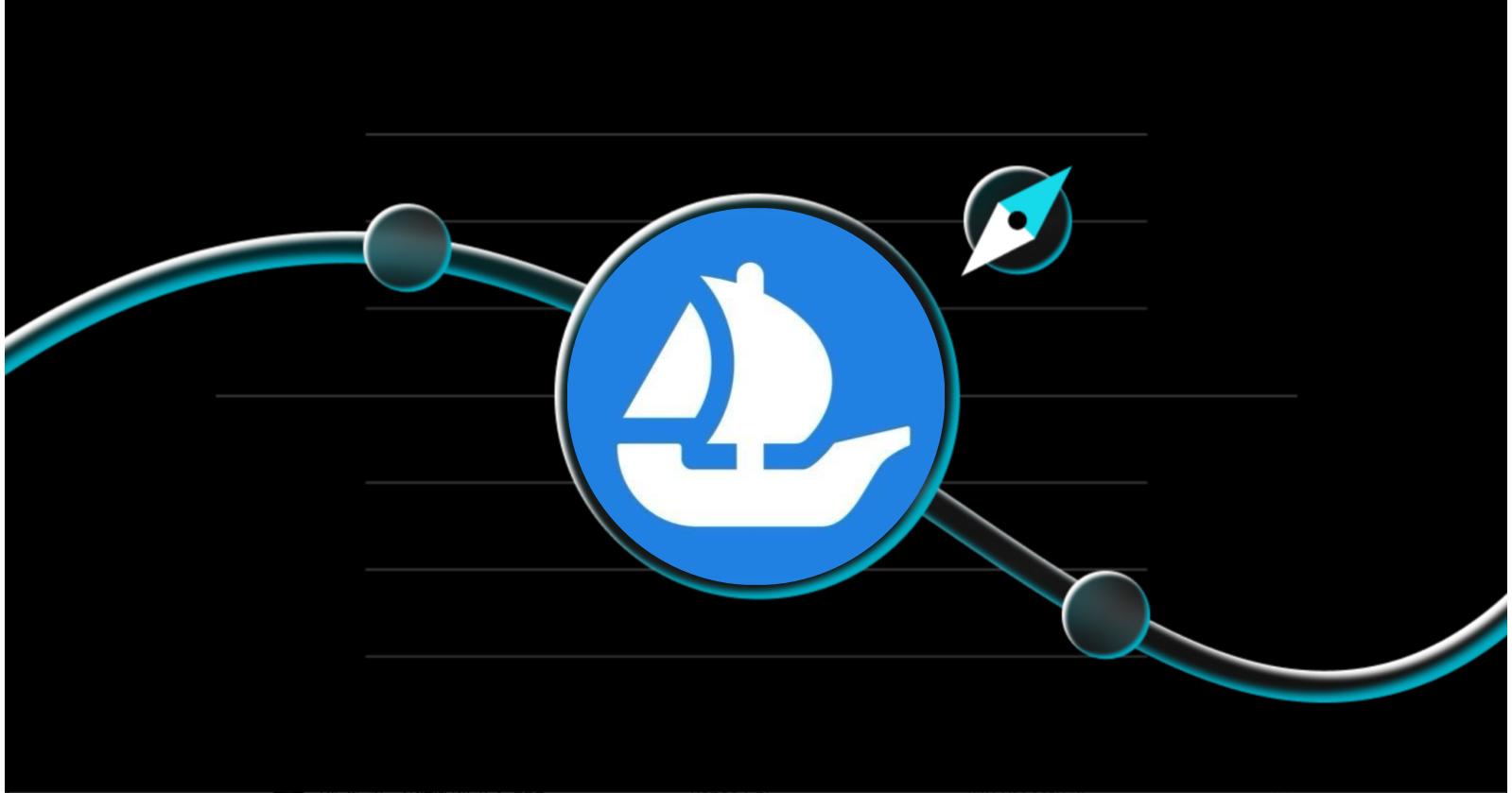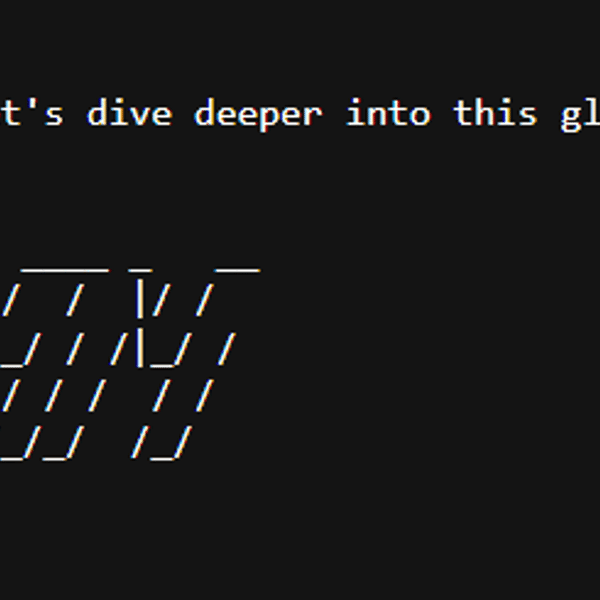Bitget:全球日交易量排名前 4!
BTC 市占率58.24%
目前 ETH 燃料費:0.1-1 gwei
BTC/USDT$122084.68 (+1.59%)恐懼與貪婪指數63(貪婪)
山寨季指數:0(比特幣季)
比特幣現貨 ETF 總淨流量:+$627.2M(1 天);+$1.82B(7 天)。Bitget 新用戶立享 6,200 USDT 歡迎禮包!立即領取
到 Bitget App 隨時隨地輕鬆交易!立即下載
Bitget:全球日交易量排名前 4!
BTC 市占率58.24%
目前 ETH 燃料費:0.1-1 gwei
BTC/USDT$122084.68 (+1.59%)恐懼與貪婪指數63(貪婪)
山寨季指數:0(比特幣季)
比特幣現貨 ETF 總淨流量:+$627.2M(1 天);+$1.82B(7 天)。Bitget 新用戶立享 6,200 USDT 歡迎禮包!立即領取
到 Bitget App 隨時隨地輕鬆交易!立即下載
Bitget:全球日交易量排名前 4!
BTC 市占率58.24%
目前 ETH 燃料費:0.1-1 gwei
BTC/USDT$122084.68 (+1.59%)恐懼與貪婪指數63(貪婪)
山寨季指數:0(比特幣季)
比特幣現貨 ETF 總淨流量:+$627.2M(1 天);+$1.82B(7 天)。Bitget 新用戶立享 6,200 USDT 歡迎禮包!立即領取
到 Bitget App 隨時隨地輕鬆交易!立即下載


3DPass (P3D) 價格預測
未上架
3DPass 在 2025、2026、2030 年乃至未來可能價值多少?3DPass 在明天、本週或本月的預測價格是多少?如果持有 3DPass 到 2050 年,潛在投資回報率是多少?
本頁面提供 3DPass 的短期和長期價格預測工具,幫助您評估 3DPass 未來的價格表現。您還可以自行設定預測值,以估算 3DPass 的未來價值。
需要注意的是,由於加密貨幣市場本身具有波動性大、複雜度高的特性,儘管價格預測提供了潛在價格區間和走勢場景的參考,但仍應保持審慎態度。
本頁面提供 3DPass 的短期和長期價格預測工具,幫助您評估 3DPass 未來的價格表現。您還可以自行設定預測值,以估算 3DPass 的未來價值。
需要注意的是,由於加密貨幣市場本身具有波動性大、複雜度高的特性,儘管價格預測提供了潛在價格區間和走勢場景的參考,但仍應保持審慎態度。
2025 年及未來 3DPass 價格預測走勢圖
根據預測的每日增長率 +0.014%,預測 3DPass 未來 10 天的價格走勢。
今日价格预测(Oct 3, 2025)
$0.001207
明日價格預測(Oct 4, 2025)
$0.001207
5 天後價格預測(Oct 8, 2025)
$0.001208
本月價格預測(Oct 2025)
$0.001209
下個月價格預測(Nov 2025)
$0.001214
5 個月後價格預測(Mar 2026)
$0.001234
2025 年價格
$0.001236
2026 年價格
$0.001298
2030 年價格
$0.001578
根據短期 3DPass 價格預測,預計 3DPass 價格將在 Oct 3, 2025 達到 $0.001207,Oct 4, 2025 達到 $0.001207,以及 Oct 8, 2025 達到 $0.001208。根據每月 3DPass 價格預測,預計 3DPass 價格將在 Oct 2025 達到 $0.001209,Nov 2025 達到 $0.001214,Mar 2026 達到 $0.001234。根據每年長期 3DPass 價格預測,預計 3DPass 價格將在 2025 年達到 $0.001236,2026 年達到 $0.001298,且 2030 年達到 $0.001578。
今日 3DPass 價格預測
目前 3DPass(P3D)價格為 $0.0007687,24 小時價格漲跌幅為 -2.70%。預計 3DPass(P3D)今日價格將達到 $0.001207。了解更多 今日 3DPass 價格。
3DPass Oct 2025 價格預測
預計 Oct 2025,3DPass(P3D)價格漲跌幅為 99.63%,且預計 3DPass(P3D)價格將於 Oct 2025 底達到 $0.001209。
3DPass 2025 價格預測
預計 2025,3DPass(P3D)價格漲跌幅為 -72.53%,且預計 3DPass(P3D)價格將於 2025 年底達到 $0.001236。
長期 3DPass 價格預測:2026、2030、2035、2040、2050
以下為基於固定增長率的 3DPass 價格預測模型。該模型不考慮市場波動、外部經濟因素或突發事件,僅專注於 3DPass 的平均價格趨勢,幫助投資者分析並快速估算 3DPass 投資的潛在收益。
請輸入您預測的 3DPass 年增長率,即可查看 3DPass 未來價值變化情況。
請輸入您預測的 3DPass 年增長率,即可查看 3DPass 未來價值變化情況。
每年 3DPass 價格預測(基於 5% 的預測年增長率)
%
預測年增長率:請輸入一個介於 -100% 到 +1,000% 之間的百分比。
| 年份 | 預測價格 | 總收益率 |
|---|---|---|
2026 | $0.001298 | +5.00% |
2027 | $0.001363 | +10.25% |
2028 | $0.001431 | +15.76% |
2029 | $0.001503 | +21.55% |
2030 | $0.001578 | +27.63% |
2035 | $0.002014 | +62.89% |
2040 | $0.002570 | +107.89% |
2050 | $0.004187 | +238.64% |
基於年增長率為 5% 的情況下,預計 3DPass(P3D)價格將在 2026 達到 $0.001298,2030 年達到 $0.001578,2040 年達到 $0.002570,2050 年達到 $0.004187。
3DPass 2026 價格預測
在 2026,基於預測年增長率為 5% 的情況下,3DPass(P3D)價格預計將達到 $0.001298。基於該預測,投資並持有 3DPass 直至 2026 的累計投資回報率將達到 5.00%。
3DPass 2030 價格預測
在 2030,基於預測年增長率為 5% 的情況下,3DPass(P3D)價格預計將達到 $0.001578。基於該預測,投資並持有 3DPass 直至 2030 的累計投資回報率將達到 27.63%。
3DPass 2035 價格預測
在 2035,基於預測年增長率為 5% 的情況下,3DPass(P3D)價格預計將達到 $0.002014。基於該預測,投資並持有 3DPass 直至 2035 的累計投資回報率將達到 62.89%。
3DPass 2040 價格預測
在 2040,基於預測年增長率為 5% 的情況下,3DPass(P3D)價格預計將達到 $0.002570。基於該預測,投資並持有 3DPass 直至 2040 的累計投資回報率將達到 107.89%。
3DPass 2050 價格預測
在 2050,基於預測年增長率為 5% 的情況下,3DPass(P3D)價格預計將達到 $0.004187。基於該預測,投資並持有 3DPass 直至 2050 的累計投資回報率將達到 238.64%。
您能從 3DPass 中獲得多少收益?
如果您今年投資 $100 於 3DPass,並持有至 2026 年,基於價格預測,您可能獲得 $5 的潛在收益,預估回報率為 5.00%。(該估算未包含手續費)。
免責聲明:本內容不構成投資建議。所提供的資訊僅用於一般參考目的。本頁面所提供的任何資訊、資料、服務或其他內容,均不構成任何形式的招攬、推薦、背書,亦不構成金融、投資或其他方面的建議。在做出任何投資決策前,請務必尋求來自法律、金融及稅務等方面的獨立專業意見。
短期 3DPass 價格預測表
每日 3DPass 價格預測(基於 0.014% 的每日預估漲幅)
3DPass 在明天、5 天後、10 天後及更長時間的預測價格是多少?%
預測每日漲幅:請輸入一個介於 -100% 到 +1,000% 之間的百分比。
| 日期 | 預測價格 | 總收益率 |
|---|---|---|
Oct 4, 2025 (明天) | $0.001207 | +0.01% |
Oct 5, 2025 | $0.001207 | +0.03% |
Oct 6, 2025 | $0.001207 | +0.04% |
Oct 7, 2025 | $0.001207 | +0.06% |
Oct 8, 2025 (5 天後) | $0.001208 | +0.07% |
Oct 9, 2025 | $0.001208 | +0.08% |
Oct 10, 2025 | $0.001208 | +0.10% |
Oct 11, 2025 | $0.001208 | +0.11% |
Oct 12, 2025 | $0.001208 | +0.13% |
Oct 13, 2025 (10 天後) | $0.001208 | +0.14% |
基於 0.014% 的每日漲幅,預計 3DPass(P3D)價格將在 Oct 4, 2025 達到 $0.001207,Oct 8, 2025 達到 $0.001208,Oct 13, 2025 達到 $0.001208。
3DPass Oct 4, 2025 價格預測
根據 3DPass 的價格預測,其每日漲幅為 0.014%,預計在 Oct 4, 2025(明天),1 枚 3DPass 的價格將達到 $0.001207。若投資並持有 3DPass 至 Oct 4, 2025 為止,預期收益率為 0.01%。
3DPass Oct 8, 2025 價格預測
根據 3DPass 的價格預測,其每日漲幅為 0.014%,預計在 Oct 8, 2025(5 天後),1 枚 3DPass 的價格將達到 $0.001208。若投資並持有 3DPass 至 Oct 8, 2025 為止,預期收益率為 0.07%。
3DPass Oct 13, 2025 價格預測
根據 3DPass 的價格預測,其每日漲幅為 0.014%,預計在 Oct 13, 2025(10 天後),1 枚 3DPass 的價格將達到 $0.001208。若投資並持有 3DPass 至 Oct 13, 2025 為止,預期收益率為 0.14%。
每月 3DPass 價格預測(基於 0.42% 的每月預估漲幅)
3DPass 在下個月、5 個月後、10 個月後及更長期的預測價格是多少?%
預測每月漲幅:請輸入一個介於 -100% 到 +1,000% 之間的百分比。
| 日期 | 預測價格 | 總收益率 |
|---|---|---|
Nov 2025 (次月) | $0.001214 | +0.42% |
Dec 2025 | $0.001219 | +0.84% |
Jan 2026 | $0.001224 | +1.27% |
Feb 2026 | $0.001229 | +1.69% |
Mar 2026 (5 個月後) | $0.001234 | +2.12% |
Apr 2026 | $0.001239 | +2.55% |
May 2026 | $0.001245 | +2.98% |
Jun 2026 | $0.001250 | +3.41% |
Jul 2026 | $0.001255 | +3.84% |
Aug 2026 (10 個月後) | $0.001260 | +4.28% |
根據 0.42% 的每月漲幅,預計 3DPass(P3D)價格將在 Nov 2025 達到 $0.001214,Mar 2026 達到 $0.001234,Aug 2026 達到 $0.001260。
3DPass Nov 2025 價格預測
根據 0.42% 的每月漲幅,3DPass(P3D)的預測價格在 Nov 2025(次月)為 $0.001214。若投資並持有 3DPass 至 Nov 2025 底,預期收益率為 0.42%。
3DPass Mar 2026 價格預測
根據 0.42% 的每月漲幅,3DPass(P3D)的預測價格在 Mar 2026(5 個月後)為 $0.001234。若投資並持有 3DPass 至 Mar 2026 底,預期收益率為 2.12%。
3DPass Aug 2026 價格預測
根據 0.42% 的每月漲幅,3DPass(P3D)的預測價格在 Aug 2026(10 個月後)為 $0.001260。若投資並持有 3DPass 至 Aug 2026 底,預期收益率為 4.28%。
熱門加密貨幣價格預測文章

What Is Morpho (MORPHO)? The DeFi Lending Protocol That Could Change Everything
Despite the explosive growth of decentralized finance, many DeFi lending platforms remain inefficient, with lenders often earning subpar yields and borrowers facing high interest rates. In 2025 alone, over $50 billion in crypto loans were issued on major platforms, yet much of this capital remained underutilized due to rigid lending structures and lack of direct borrower-lender matching. This inefficiency highlights a clear need for smarter, more capital-efficient solutions in the DeFi ecosystem.
Morpho (MORPHO) addresses this challenge by introducing a peer-to-peer lending layer that sits atop existing DeFi protocols like Aave and Compound. By directly matching lenders with borrowers whenever possible, Morpho optimizes capital use, reduces borrowing costs, and increases returns for participants. With billions of dollars already locked into its smart contracts and strategic partnerships with platforms like Crypto.com, Morpho is fast emerging as a DeFi protocol capable of transforming crypto lending as we know it.
What Is Morpho Protocol?
Morpho Protocol is a decentralized, non-custodial lending platform built on Ethereum and other EVM-compatible chains. Created by Morpho Labs, Morpho has quickly grown to become one of the largest DeFi lending networks, attracting billions in user deposits. Unlike traditional DeFi lending platforms that rely entirely on large liquidity pools, Morpho introduces a peer-to-peer (P2P) matching layer that directly connects lenders and borrowers whenever possible. This design allows participants to enjoy higher yields and lower borrowing costs while keeping full control of their funds.
At its core, Morpho enables users to create customizable lending markets, choosing specific collateral types, loan assets, and interest rate models. Lenders can deposit their crypto into these markets or into Morpho Vaults, which are managed funds that optimize returns while remaining non-custodial. Meanwhile, borrowers can take overcollateralized loans in a secure and trustless environment. By combining the reliability of established lending pools like Aave and Compound with its own efficiency-enhancing layer, Morpho is redefining the standards for DeFi lending.
How Morpho Protocol Works
Morpho operates as a peer-to-peer lending overlay on top of existing DeFi protocols like Aave and Compound. Instead of simply pooling funds and distributing interest according to the pool’s rates, Morpho matches lenders and borrowers directly whenever possible, creating a more efficient and cost-effective system. This approach not only optimizes capital usage but also provides better yields for lenders and lower borrowing costs for borrowers.
● Peer-to-Peer Matching: Morpho maintains its own internal order books for each asset. Borrowers and lenders are paired directly, allowing lenders to earn slightly higher interest while borrowers pay less than the standard pool rate. Any leftover supply or demand is automatically routed to the underlying lending pool.
● Morpho Vaults: These are non-custodial, permissionless vaults where users can deposit assets and earn optimized yields. Vaults are managed by risk curators who allocate funds across multiple lending markets while preserving users’ control over their assets.
● DAO Governance: MORPHO token holders participate in the protocol’s decision-making process, voting on upgrades, interest rate models, market parameters, and other protocol changes. This ensures that the platform evolves in alignment with the community’s interests.
● Bundlers for Efficiency: Morpho allows multiple actions—such as lending, borrowing, or staking—to be executed in a single transaction. This reduces gas costs and simplifies user interactions on the platform.
Morpho creates a highly efficient and user-friendly DeFi lending experience. Lenders benefit from higher yields, borrowers enjoy lower interest rates, and the protocol maintains security and decentralization by leveraging well-audited smart contracts.
Morpho (MORPHO) Tokenomics
Morpho (MORPHO) Token Allocation
The MORPHO token is the native utility and governance token of the Morpho Protocol. With a maximum supply of 1 billion tokens, MORPHO is primarily used for governance, allowing holders to vote on protocol upgrades, interest rate models, and market parameters.
Beyond governance, MORPHO serves as a tool to incentivize network activity, encouraging lenders and borrowers to participate actively in the protocol. By integrating these incentives with a balanced distribution, Morpho aims to create a sustainable and engaged ecosystem where users have a direct stake in the protocol’s growth and success.
Morpho Teams Up with Crypto.com for Cronos Lending
In a major development for DeFi adoption, Morpho has partnered with Crypto.com and the Cronos blockchain to bring its lending and borrowing infrastructure to a broader audience. This collaboration enables Crypto.com users to access stablecoin yields and crypto lending markets powered by Morpho, allowing them to deposit assets like BTC and ETH on Cronos and earn optimized returns without leaving the platform.
The integration leverages Morpho’s peer-to-peer matching system and vault architecture, ensuring efficient capital usage and higher yields for lenders while keeping borrowing costs competitive. By embedding Morpho’s technology, Crypto.com can offer its users double-digit stablecoin yields and seamless access to DeFi markets, combining the security and user-friendliness of a centralized platform with the efficiency of decentralized finance. This partnership highlights Morpho’s growing influence in the DeFi ecosystem and its potential to bring DeFi lending to mainstream crypto users.
Morpho (MORPHO) Price Prediction for 2025, 2026–2030
Morpho (MORPHO) Price Today
Source: CoinMarketCap
As of October 3, 2025, Morpho (MORPHO) is trading at around $1.96, showing a 6.5% increase in the last 24 hours. This recent surge reflects growing investor interest, fueled by partnerships and increasing adoption across the DeFi ecosystem.
Price predictions by year range:
● 2025: MORPHO could reach around $3.00 if adoption rises and Total Value Locked (TVL) grows due to integrations with platforms like Crypto.com.
● 2026: Analysts predict further growth, with MORPHO potentially trading between $2.8–$4.0, supported by expanding user adoption and broader DeFi integration.
● 2027–2030: Long-term forecasts are bullish, with MORPHO possibly reaching $5–$8 by 2030, assuming the protocol continues growing its lending network, user base, and partnerships.
Factors influencing price:
● Growth in TVL: Higher assets locked in Morpho’s markets increase token demand.
● Platform Integrations: Strategic partnerships drive wider usage.
● User Adoption: More active lenders and borrowers strengthen network effects.
● Risks: Market volatility, regulatory changes, and competition from other DeFi platforms could impact performance.
Conclusion
Morpho (MORPHO) is redefining DeFi lending by bridging the gap between traditional liquidity pools and peer-to-peer efficiency. Its use of vaults, direct lender-borrower matching, and DAO governance makes the system simple and rewarding for users. This combination creates new opportunities for lenders and borrowers alike.
With strategic partnerships, billions in total value locked, and growing adoption, Morpho has the potential to become a major player in decentralized finance. The bigger question is, can it maintain this momentum and truly transform crypto lending as we know it? For investors and DeFi enthusiasts, following Morpho’s journey could reveal not just a promising token, but a glimpse into the future of DeFi.
Disclaimer: The opinions expressed in this article are for informational purposes only. This article does not constitute an endorsement of any of the products and services discussed or investment, financial, or trading advice. Qualified professionals should be consulted prior to making financial decisions.
Bitget 學院2025-10-03 16:20

PancakeSwap (CAKE) Price Prediction: Can It Break $5 Soon?
PancakeSwap’s native token, CAKE, is back in the spotlight after a sharp rally this week. The token is currently trading around $3.30, up nearly 28% in the past 24 hours, marking its strongest performance of 2025 so far. The surge comes on the back of record-breaking trading volumes on PancakeSwap, which hit more than $770 billion in Q3 2025, alongside broader momentum in the DeFi market.
This sudden burst of activity has investors asking the big question: can CAKE finally break the $5 mark? To answer that, we’ll take a closer look at what’s fueling today’s gains, how PancakeSwap’s fundamentals are evolving, and what different scenarios could mean for CAKE price outlook through 2025 and even out to 2030.
Why PancakeSwap (CAKE) Price Is Rising Today
PancakeSwap (CAKE) Price today
Source: CoinMarketCap
CAKE price surge isn’t just random market noise — it’s tied directly to PancakeSwap’s explosive growth in recent months. The decentralized exchange recorded a record $772 billion in trading volume during Q3 2025 , up more than 40% from the previous quarter. Since a portion of every trade goes toward buying back and burning CAKE, higher volume directly translates into more tokens being removed from circulation — a key driver behind today’s rally.
Another catalyst comes from Tokenomics 3.0 , PancakeSwap’s latest upgrade designed to make CAKE deflationary. With reduced emissions and an aggressive burn schedule, the supply of CAKE is shrinking faster than ever. In fact, PancakeSwap has maintained two straight years of monthly net token burns, including over 2.7 million CAKE burned in August 2025 alone.
BNB Price
Source: CoinMarketCap
Lastly, the broader market backdrop is supportive. BNB — the backbone of PancakeSwap’s ecosystem — recently hit a new all-time high, and liquidity flowing into the BNB Chain often spills over into PancakeSwap. Together, these factors explain why CAKE has broken out of its previous range and is now testing higher resistance levels.
PancakeSwap Fundamentals and Growth Drivers
While short-term rallies grab attention, CAKE’s long-term outlook depends on how well PancakeSwap continues to innovate and capture market share in decentralized finance (DeFi). Several core fundamentals are shaping its trajectory:
1. Tokenomics 3.0 and Supply Reductions
PancakeSwap is implementing a deflationary token model where emissions are cut and more fees are directed toward burning CAKE. Over time, this means the circulating supply will shrink, potentially tightening market conditions and supporting higher prices. With around 20% of the total supply targeted for removal by 2030, this is one of the strongest long-term bullish signals for CAKE.
2. Multi-Chain Expansion
PancakeSwap is no longer just a BNB Chain DEX. In 2025, it expanded to networks like Base and Solana, and also rolled out cross-chain swap features. This move diversifies liquidity sources, attracts new users, and ensures the platform is not dependent on one blockchain ecosystem.
3. Trading Volume Growth
The protocol is breaking records. Monthly trading volumes have crossed the hundreds of billions mark, with Q3 2025 setting a new all-time high. High usage doesn’t just highlight adoption — it also means more fees and more CAKE burned, which strengthens the token’s fundamentals.
4. DeFi Market Trends
As decentralized trading, yield farming, and cross-chain swaps become more mainstream, PancakeSwap is well-positioned as one of the most widely used DEX platforms. If DeFi continues its growth trajectory, CAKE could see long-term demand growth aligned with sector expansion.
Together, these factors form the backbone of CAKE’s value proposition, setting the stage for its potential to test — and sustain — higher price levels in the years ahead.
PancakeSwap (CAKE) Price Prediction for 2025
CAKE’s short-term outlook in 2025 hinges on trading volume momentum, the pace of token burns, and overall market sentiment. Based on these factors, here are three possible scenarios:
Bullish Scenario
If PancakeSwap maintains record trading volumes and continues aggressive token burns under Tokenomics 3.0, CAKE could keep climbing through the year. Strong DeFi adoption, coupled with spillover liquidity from BNB’s ecosystem, may help CAKE push past resistance levels. In this case, CAKE could realistically test the $4.50–$5.00 range by late 2025, breaking into new territory if broader crypto markets remain bullish.
Neutral Scenario
In a steadier growth environment, CAKE might consolidate its gains without a big breakout. Consistent burns and multi-chain expansion would still support a gradual upward trend, but without major hype cycles, CAKE may trade in the $3.50–$4.00 range through the end of 2025. This reflects healthy fundamentals but restrained market enthusiasm.
Bearish Scenario
If market sentiment cools or regulatory challenges intensify — such as further access bans like Turkey’s — CAKE could lose momentum. A slowdown in trading volume or heavy sell pressure from unlocks may drive the price back toward the $2.50–$3.00 zone. This would mark a retracement but still keep CAKE above its early-2025 lows.
PancakeSwap (CAKE) Price Outlook: 2026 to 2030
Looking beyond 2025, CAKE’s price path will depend on how effectively PancakeSwap sustains its growth, manages supply reduction, and adapts to evolving DeFi trends. Here are three potential scenarios:
Bullish Long-Term Scenario
If PancakeSwap cements its position as a leading multi-chain DEX, with sustained volume growth and consistent token burns, CAKE could move into higher single digits by the end of the decade. With Tokenomics 3.0 targeting a 20% supply cut by 2030, scarcity could push CAKE into the $8–$10+ range by 2030, especially if DeFi adoption accelerates.
Neutral Long-Term Scenario
Under steady but less explosive growth, PancakeSwap continues to attract users across chains, and burns gradually tighten supply. In this case, CAKE may trade in the $5–$8 range by 2030. This reflects sustainable, incremental adoption without another major DeFi boom cycle.
Bearish Long-Term Scenario
If competition intensifies or regulatory crackdowns weigh heavily on DeFi, PancakeSwap could face slower adoption. Even with token burns, limited demand might keep CAKE’s price capped under $5 well into 2030. In this scenario, CAKE remains a functional governance and utility token but struggles to generate breakout growth.
Conclusion
PancakeSwap’s growth story in 2025 shows how strong fundamentals — from record-breaking trading volumes to deflationary tokenomics — can quickly shift investor sentiment in favor of CAKE. With more supply being burned each month and the platform expanding across multiple chains, the ingredients for long-term value creation are clearly in place. Breaking above $5 now feels closer than it has in years.
Yet the crypto market is rarely predictable. Regulatory hurdles, market cycles, or even shifting user preferences could change the pace of PancakeSwap’s rise. The real question is not just whether CAKE can cross $5 — but whether it can go far beyond it, and how long it might take before the market finds out.
Disclaimer: The opinions expressed in this article are for informational purposes only. This article does not constitute an endorsement of any of the products and services discussed or investment, financial, or trading advice. Qualified professionals should be consulted prior to making financial decisions.
Bitget 學院2025-10-03 12:58

HUMA Airdrop Part 2 Begun: Claim 10% APR for Staking – Your Guide to Huma Crypto’s Incentives
The HUMA airdrop part 2 has officially begun, offering early participants a fresh opportunity to not only claim free HUMA tokens, but also earn an attractive 10.5% annual percentage rate (APR) through staking. As the Huma crypto project rapidly grows in profile and volume, the ongoing HUMA airdrop is drawing major attention for its innovative real-yield model and robust user rewards. Whether you’re a newcomer to Huma crypto or a seasoned DeFi investor, this comprehensive guide unpacks everything you need to know—eligibility, tokenomics, airdrop claims, the new Feather rewards, and HUMA price outlook—so you can maximize your participation in the HUMA airdrop and the expanding huma crypto ecosystem.
Source: CoinMarketCap
What Is Huma Crypto and How Does It Work?
Founded in 2023, Huma Finance has rapidly established itself as a pioneering force in the human crypto ecosystem by reinventing cross-border payments and liquidity solutions. By leveraging stablecoins and smart contracts, Huma crypto enables real-time, on-chain trade finance, credit settlements, and global remittances, providing seamless access and transparency to global payments. This sets Huma crypto apart from traditional DeFi models that rely heavily on speculative liquidity, as Huma’s yields are rooted in real-world trade activities, particularly serving SMEs and payment service providers.
Notably, the Huma crypto protocol has processed a cumulative transaction volume exceeding $4.3 billion, with total platform revenue surpassing $4.09 million and active liquidity assets above $104 million. The user base, nearing 49,000 depositors, represents an extraordinary ninefold month-over-month growth in the huma crypto arena. Huma crypto now accounts for more than 40% of Solana DeFi TVL, ranking ahead of established protocols such as Jupiter and Raydium.
HUMA Tokenomics
The HUMA token is at the heart of the huma crypto incentive model. Its structure and utility are designed to secure protocol longevity, reward real contribution, and deter short-term speculative behavior:
Total Supply: 10 billion HUMA
Initial Circulation: 17.33%
Distribution Breakdown:
5% allocated for early user airdrops—including the current HUMA airdrop
31% for ecosystem incentives
20.6% assigned to early investors
19.3% for the core team and advisors
1% reserved for presale (subject to a 3-month lock-up)
Key Huma crypto features with HUMA token:
Staking and Yield: Holders can stake HUMA and receive up to 14% APR from protocol revenues
Governance: Voting power in protocol evolution for all HUMA holders
Buyback & Burn: Deflationary supply via profit-powered token repurchase and burning mechanisms
Huma’s April 2024 profit reached $900,000—a testament to the robustness of its model. The recently completed presale valued Huma crypto’s FDV at $75 million, a deep discount designed to capture broad retail and community interest.
HUMA Price and Huma Crypto Network Performance
Since the launch of the HUMA token, huma crypto has witnessed strong market traction:
Current price: $0.03192, as per CoinMarketCap
Market Cap: $71.6 million
Circulating supply: ~2.24 billion
High platform metrics: $4.3 billion+ processed, $4.09 million+ protocol revenue, and $104 million+ active liquidity
These statistics confirm Huma crypto’s role as a dominant force not only in Solana DeFi but also across the broader decentralized finance landscape.
Season 1 HUMA Airdrop (Part 2) Details and the Huma Feather Program
Source: X
The ongoing HUMA airdrop represents a cornerstone of Huma crypto’s commitment to community-driven distribution. Here’s how it works:
Season 1 HUMA Airdrop Structure
Total Allocation: 2.1% of the total HUMA supply (approx. 210 million tokens)
Parts:
Part 1 Claim: Opened August 26, 2024, 13:00 UTC
Part 2 Claim: Live since September 26, 2024, 13:00 UTC
Deadline: All HUMA airdrop claims must be completed by October 26, 2024, 13:00 UTC
Eligibility:
Early Huma crypto depositors and liquidity providers
Users who performed qualifying transactions on supporting blockchains
Recipients identified on-chain as per Huma crypto snapshot and airdrop criteria
Claim Process:
Visit the official claim dashboard
Connect your wallet and verify your airdrop eligibility
Follow the guided steps to receive your HUMA airdrop
Tip: Lock your tokens until after the claim window to maximize any bonus allocation
Network: Distributed primarily on Ethereum (ERC-20); compatible wallets are required
The HUMA airdrop is designed for fair and long-term engagement, meaning those who support and hold through the claim window are best positioned for future opportunities.
Introducing Huma Feather: The Next Phase in Huma Crypto Incentives
Looking forward, Huma crypto is expanding community rewards through the innovative Huma Feather system—essential for Season 2 and future HUMA airdrop events.
What Is Huma Feather?
Huma Feather is a native, on-chain points system that rewards Huma crypto users for meaningful participation. Feathers are earned through:
Providing or staking liquidity on Huma crypto’s supported markets
Engaging in governance, protocol campaigns, or community activities
Referring users and contributing to the ecosystem
How It Works
Non-Transferable: Feathers cannot be traded or transferred; they strictly track user contribution
Progress Tracking: Monitor your balance on the Huma crypto dashboard with your connected wallet
No Direct Monetary Value: Feathers do not act as tokens but directly impact eligibility and allocation size in upcoming airdrops
Feathers and the Future HUMA Airdrop
Feathers are now the qualification metric for Season 2 and subsequent HUMA airdrop campaigns. The more Feathers accumulated, the greater the HUMA allocation a user can expect—making sustained engagement with Huma crypto critically valuable.
HUMA Price Prediction & Outlook
Based on current tokenomics, robust platform fundamentals, and accelerating adoption:
Short-term: The confluence of new airdrop rounds, protocol profitability, and increasing DeFi attention is likely to support renewed trading activity, though investors should anticipate market volatility around large unlock events.
Mid/Long-term: Huma’s unique positioning as a “real-yield” DeFi protocol, deep integrations with Solana, and focus on trade financing, suggest strong potential for price appreciation, contingent on sustained user growth and continued profit scaling.
Considerations: As always, potential investors should conduct their own due diligence and be mindful of market and protocol risks in a fast-evolving sector.
Conclusion
Huma Finance stands out as a leader in blockchain-based financial infrastructure, driving real-world utility and sustainable growth through its PayFi model. The current airdrop not only rewards early adopters but also marks a pivotal moment for expanding community participation. Backed by transparent tokenomics, rapid ecosystem expansion, and a commitment to on-chain yield, Huma Finance remains a noteworthy project for investors and DeFi enthusiasts navigating the future of crypto-powered global payments.
Follow Bitget on X and Win 1 BTC
Disclaimer: The opinions expressed in this article are for informational purposes only. This article does not constitute an endorsement of any of the products and services discussed or investment, financial, or trading advice. Qualified professionals should be consulted prior to making financial decisions.
Bitget 學院2025-09-28 08:05

Plasma (XPL) Price Prediction for 2025, 2026–2030
In the first hour after its mainnet launch in September 2025, Plasma (XPL) drew in roughly $250 million worth of stablecoins, one of the fastest liquidity inflows ever recorded for a new blockchain. The feature that caught attention was its ability to process USDT transfers without gas fees, a simple proposition that carried wide appeal. At the same time, its native token, XPL, began trading on major exchanges and more than doubled in value during the early sessions, marking one of the more striking openings of the year.
This strong beginning has left investors weighing how far the project can go and what risks may shape its path. In this article, we examine price predictions for Plasma from 2025 through 2030, considering bullish, base, and bearish scenarios for each year. Whether XPL can build on its rapid start—or fade once the early excitement cools—is the question that will define its story over the rest of the decade.
Plasma’s Launch Day: From Record Stablecoin Inflows to Exchange Listings
Plasma (XPL) Price
Source: CoinMarketCap
Plasma’s mainnet went live on September 25, 2025, and quickly distinguished itself with a striking debut. In the first hour, the network drew in about a quarter of a billion dollars in stablecoin deposits, most of it in USDT. By the end of the day, inflows were approaching two billion, a level rarely seen in such a short window for a new blockchain. A promotional airdrop that released 10% of the token supply helped fuel this momentum, encouraging immediate use of the platform.
The appeal rested on a simple but powerful promise: USDT transfers could be made without gas fees. This feature set Plasma apart from established chains, while more complex interactions, such as contract execution, continued to require its native token, XPL. The token’s arrival on major exchanges—Binance, OKX, and KuCoin among them—gave traders easy access from the outset. At launch, XPL had a total supply of ten billion, with about 1.8 billion circulating and another 2.5 billion scheduled for release after a one-year cliff in mid-2026. Together, these elements created both immediate market activity and long-term points of speculation.
2025 Price Prediction
The remainder of 2025 will be shaped by the momentum of Plasma’s launch and the market’s ability to absorb that energy. Early forecasts suggest that XPL could finish the year in a band just above its opening range. One analysis projects values between $1.64 and $1.74, with an average near $1.68. Another sets a wider corridor of $0.90 to $1.50, reflecting the possibility of profit-taking after the initial rush.
Bullish case: If Plasma maintains steady inflows of stablecoins and developers continue building applications on the network, XPL could hold near the higher end of these estimates, trading above $1.50.
Base case: More moderate growth would likely keep the token closer to the $1.20–$1.40 range, where it has already shown signs of stabilizing after the launch surge.
Bearish case: Should early enthusiasm fade or the broader market weaken, XPL could slip below the dollar mark, testing the lower forecasts around $0.90.
In all cases, volatility will remain high. Plasma has a working product and visible traction, but it is still in the first months of its life cycle. Prices are therefore likely to respond quickly to changes in sentiment, exchange activity, and the early data on network usage.
2026 Price Prediction
The year 2026 introduces a structural challenge for XPL: a major token unlock scheduled for mid-year. Roughly 2.5 billion tokens, equal to a quarter of the total supply, are set to come onto the market after a one-year cliff. This event alone could weigh on prices, even if Plasma continues to attract users.
Bullish case: If adoption grows fast enough to offset the supply increase—through higher stablecoin volumes, broader exchange support, and more applications—XPL could trade in the $2.10 to $2.30 range, as some forecasts suggest.
Base case: A more cautious outlook places the token between $1.00 and $1.50, with the unlock creating intermittent sell-side pressure that slows any upward movement.
Bearish case: If demand fails to match the added supply, or if the broader market faces a downturn, XPL could drift back toward $0.75 to $1.00, giving up much of its early premium.
By this stage, the novelty of Plasma’s launch will have passed, and long-term adoption patterns will matter more than promotional campaigns. The mid-2026 unlock will serve as the first real test of whether the project’s fundamentals can support its valuation.
2027 Price Prediction
By 2027, Plasma will either have proven itself as a lasting platform for stablecoin transfers or settled into a smaller niche. The heavy supply event of 2026 will be behind it, and the market will look more closely at adoption figures and developer activity. Forecasts for this year generally show a range that moves XPL further into the low single digits.
Bullish case: If Plasma continues to capture stablecoin flows and builds out a larger ecosystem, XPL could reach $2.70 to $3.20, with some technical models projecting even higher levels near $4.00 to $4.50.
Base case: A steadier outcome would keep the token in the $2.00 to $2.50 range, reflecting incremental growth but not a dramatic shift.
Bearish case: If adoption plateaus or competitors overtake Plasma’s advantages, XPL might stay closer to $1.50 to $2.00, showing little progress beyond its early years.
By this point, the novelty of the launch will no longer matter. What will count is whether Plasma has found a durable place among Layer-1 chains, especially in handling stablecoin traffic.
2028 Price Prediction
By 2028, Plasma will have had several years to prove whether its gas-free transfers are more than a launch attraction. The forecasts for this year show a wider spread, reflecting the uncertainty about how much of the stablecoin market Plasma can realistically capture.
Bullish case: Strong adoption and a robust developer community could push XPL into the $3.50 to $4.50 range, with some optimistic models extending to around $5.50 if growth exceeds expectations.
Base case: If the network continues to expand at a moderate pace, the token may trade between $3.00 and $4.00, consolidating its position without breaking out dramatically.
Bearish case: A slowdown in activity, or pressure from rival chains with similar features, could keep XPL nearer $2.50 to $3.00, suggesting limited progress from earlier years.
By this stage, Plasma’s future will depend less on early incentives and more on whether it has become a trusted settlement layer for stablecoins. Without that role, price growth is likely to remain subdued.
2029 Price Prediction
As 2029 approaches, the market will likely treat Plasma less as a new experiment and more as an established part of the ecosystem—if it maintains relevance. By now, the question will be whether XPL can continue moving deeper into the single-digit price range or whether its growth has already peaked.
Bullish case: With broad adoption and strong network effects, XPL could trade in the $4.50 to $6.00 range, possibly testing higher levels if usage of gas-free stablecoin transfers remains a unique draw.
Base case: More conservative projections keep the token near $4.00 to $5.00, reflecting steady but unspectacular progress.
Bearish case: If Plasma is overshadowed by newer entrants or regulatory pressure limits stablecoin activity, XPL could slip back toward $3.00 to $4.00, erasing some of its gains.
By this point, the market will measure Plasma less on novelty and more on durability. Its value will hinge on consistent transaction volumes and its ability to hold ground against competitors in a crowded field.
2030 Price Prediction
By 2030, Plasma will have been active for five full years, long enough for its role in the market to be clear. Forecasts for this year generally place XPL in the mid-to-high single digits, though the exact figures vary depending on assumptions about adoption and supply management.
Bullish case: If Plasma becomes a major settlement layer for stablecoins and maintains consistent developer interest, XPL could climb to $6.00 to $8.00, with some optimistic projections pointing slightly higher.
Base case: A more measured outcome would see the token in the $5.00 to $6.50 range, consistent with steady adoption but not explosive growth.
Bearish case: Should demand weaken or competing chains dominate the stablecoin market, XPL might remain closer to $4.50 to $5.50, marking a slowdown in momentum.
By the end of the decade, the critical measure will be whether Plasma has achieved lasting relevance. Without that, even modest growth may prove difficult, while success in capturing stablecoin flows could leave XPL firmly valued in the single-digit range.
Can XPL Hit $10?
The idea of XPL reaching $10 has been a recurring question since its launch. On paper, the number is possible, but most forecasts for the next five years stop well short of that mark. The majority of models place XPL in the $5 to $8 range by 2030, even under favorable assumptions about adoption and liquidity. Crossing into double digits would therefore require performance far above the base case.
Several conditions would have to align. Plasma would need to capture a large share of global stablecoin transfers, sustain heavy transaction volumes, and possibly introduce additional features that drive long-term demand for XPL. It would also need to manage its token supply effectively, as scheduled unlocks and inflation can dilute price gains if demand is not strong enough. Even then, broader market conditions, such as regulation of stablecoins or the rise of rival blockchains, would play a decisive role.
A $10 valuation is not out of the question, but it represents an optimistic scenario rather than a central forecast. For most investors, it is better framed as a possibility on the far end of the bullish spectrum rather than an expectation.
Conclusion
Plasma’s launch in late 2025 gave it one of the fastest starts of any recent blockchain, with record stablecoin inflows and immediate trading activity for its token. That early burst has made XPL a subject of attention, but it has also set a high bar for what comes next. Forecasts through 2030 generally place the token in the mid to high single digits, reflecting both optimism about adoption and caution about supply pressures.
The path ahead will depend on how well Plasma holds its initial advantages. Gas-free USDT transfers give it a practical niche, but lasting value will come only if that feature translates into long-term use and consistent transaction volume. The scheduled token unlocks, competition from other chains, and the broader state of the crypto market all stand as important variables. Investors looking at XPL should treat predictions as scenarios rather than certainties, and follow the data on usage and supply closely. By the end of the decade, Plasma may have secured a durable place in the ecosystem, but whether it becomes part of everyday transactions or fades into the long list of experiments is the question that will keep the market curious.
Disclaimer: The opinions expressed in this article are for informational purposes only. This article does not constitute an endorsement of any of the products and services discussed or investment, financial, or trading advice. Qualified professionals should be consulted prior to making financial decisions.
Bitget 學院2025-09-26 14:07

OpenSea Airdrop and Listing Date Set for October 2025: Everything You Need to Know
After years of powering the largest NFT marketplace in the world, OpenSea is finally setting sail with a token of its own. In October 2025, the platform will launch the SEA token, complete with a community airdrop and a confirmed token generation event (TGE).
The move comes at a time when NFT markets are maturing and competition among platforms is heating up. By introducing SEA, OpenSea is not only rewarding its loyal users but also laying the groundwork for a broader token economy with governance and incentives built in. For investors, this raises an important question: can SEA strengthen OpenSea’s position in Web3 and deliver lasting value once it hits the market?
What Is OpenSea?
OpenSea is the most established and widely used marketplace for non-fungible tokens (NFTs). It was founded in 2017 by Devin Finzer and Alex Atallah, two entrepreneurs who saw the potential of blockchain for creating and trading unique digital assets. Since then, it has grown into the largest NFT marketplace, handling billions of dollars in trading volume and hosting some of the most recognized collections in the space.
From profile-picture projects like Bored Ape Yacht Club to in-game items, art, and music, OpenSea has supported millions of transactions across diverse categories. The platform began with Ethereum but has expanded to other networks such as Polygon, Arbitrum, Solana, and Base. This multi-chain approach allows traders to access a wide range of assets without being limited to a single blockchain’s costs or speed.
At its core, OpenSea serves as a bridge between creators and collectors. Artists can mint and list their work with little technical knowledge, while buyers can connect a crypto wallet and participate in fixed-price sales or auctions. Over the years, OpenSea has become known for liquidity, visibility, and being the first stop for many new NFT projects.
How OpenSea Works
OpenSea functions like an online marketplace, but instead of physical goods, it facilitates the trading of digital assets recorded on blockchains. Everything runs through smart contracts, so buyers and sellers transact directly without needing an intermediary to hold funds or items.
Key aspects of how OpenSea works include:
● Wallet Connection: Users start by linking a crypto wallet such as MetaMask, Coinbase Wallet, or Phantom. The wallet serves as both identity and storage for NFTs and tokens.
● Minting and Listing: Creators can “mint” digital items into NFTs directly on the platform and set them for sale at a fixed price or through auctions.
● Browsing and Trading: Collectors browse listings across multiple blockchains, compare prices, and buy or bid. Once a deal is made, the NFT is transferred automatically to the buyer’s wallet.
● Fees and Revenue: OpenSea typically takes a small percentage fee from each transaction. With the OS2 upgrade, fees were adjusted to 1% on NFT trades and 0.85% on token trades, alongside other reward mechanisms.
● Cross-Chain Support: Beyond Ethereum, OpenSea integrates with Polygon, Arbitrum, Solana, and more, giving users flexibility in cost, speed, and available collections.
● Security: Because trades are executed on-chain, OpenSea itself does not custody funds or NFTs. This reduces counterparty risk, though users must remain cautious of scams or phishing attempts.
This setup makes OpenSea function like a decentralized version of eBay for digital collectibles, accessible worldwide with only a wallet and an internet connection.
OpenSea (SEA) Tokenomics
The SEA token will serve as the native token of the OpenSea ecosystem, introducing both utility and governance to a marketplace that has until now relied mainly on transaction fees. Full supply and allocation details will be released at the token generation event in October 2025, but several elements are already known.
● Issuance: Overseen by the independent OpenSea Foundation.
● Distribution: Large airdrop for historical and current users, plus ongoing OS2 rewards.
● Reward Vault: 50% of platform fees diverted, with over $1 million in OP and ARB already set aside.
● Utility: Planned functions include fee discounts, exclusive feature access, and governance rights.
● Supply Details: Total supply and vesting schedules will be confirmed at TGE.
OpenSea Airdrop: Everything You Should Know
The SEA airdrop is central to OpenSea’s token launch. Instead of focusing only on new users or traders right before the listing, OpenSea has emphasized rewarding both historical activity and current engagement on its upgraded OS2 platform. This approach ensures that long-time community members are recognized, while active participation in the lead-up to the TGE can still increase allocations.
How Eligibility Works
● Historical Users: Anyone who has previously interacted with OpenSea—whether by buying, selling, listing, or bidding on NFTs—is included in the eligibility pool. Past usage will directly impact the base allocation of SEA.
● Current Users: OpenSea launched a final rewards phase running from mid-September to mid-October 2025. During this period, users can boost their airdrop share by taking part in structured activities.
The Final Rewards Phase
To make the process engaging, OpenSea introduced a gamified system built around Treasure Chests:
● Every eligible user receives a Starter Chest.
● Chests can be leveled up (up to level 12) by completing platform activities.
● Key activities include:
○ Trading NFTs or tokens across supported chains
○ Completing daily Voyages (missions that reward experience points)
○ Collecting Shipments, which drop randomly during the campaign
● Higher-level chests unlock larger allocations of SEA and, in some cases, additional NFT rewards.
Reward Vault
To back the program, OpenSea is diverting 50% of its platform fees into a reward vault. This vault already holds more than $1 million in Optimism (OP) and Arbitrum (ARB) tokens, which will be distributed alongside SEA. The vault ensures that rewards have tangible value beyond the token itself, and it underscores OpenSea’s commitment to creating a sustainable incentive system.
Steps for Users
To maximize rewards before the TGE:
● Link all active wallets to your OpenSea profile so activity is counted together.
● Continue trading NFTs and tokens organically, avoiding suspicious or artificial patterns.
● Check the rewards dashboard regularly to track your chest level and XP progress.
● Complete as many daily Voyages and tasks as possible to steadily raise your allocation.
For many investors, this is the easiest and most direct way to gain exposure to the new token.
When Is the OpenSea (SEA) Listing Date?
The token generation event (TGE) for SEA is scheduled for October 2025. OpenSea has confirmed that final tokenomics, claim details, and exchange listings will all be announced around that time. A snapshot of user activity will take place in early October to finalize airdrop allocations, with the claim process opening shortly after. Exchange listings are expected to follow quickly, making October the pivotal month when SEA shifts from reward promises to a live, tradable token.
SEA Token Price Prediction: What Could Happen After Launch?
Predicting the price of a new token is always uncertain, but a few scenarios are worth considering. On the optimistic side, OpenSea’s reputation as the largest NFT marketplace could create strong initial demand for SEA, especially with airdrop recipients eager to hold for governance and potential fee discounts. Early liquidity pools and listings on major exchanges may drive a short-term spike if buying pressure outweighs selling from airdrop claimants.
However, there are also risks. Large allocations to the community mean many holders could sell quickly to lock in gains, leading to volatility. Without clear long-term utility, SEA might struggle to maintain momentum once the initial hype fades. Much will depend on how OpenSea integrates the token into its ecosystem and whether trading volumes on the platform grow.
Analyst forecasts already vary: some expect SEA to trade near the $0.60–$0.70 range by late 2025, while others predict more modest values closer to $0.50. The takeaway is that SEA’s post-launch performance will likely mirror the broader sentiment in NFTs and crypto markets. Investors should be prepared for swings in the early days and focus on whether the token builds real, lasting use cases over time.
Conclusion
The SEA token launch represents a new chapter for OpenSea, transforming it from the leading NFT marketplace into a platform with its own token-powered ecosystem. By introducing airdrops, a reward vault, and governance functions, OpenSea is building stronger ties with its community while opening new possibilities for growth.
For investors, October 2025 is more than just a launch date. It is the point where OpenSea’s reputation, user base, and long term vision come together in a live token economy. If SEA fulfills its promise of utility and active participation, it has the potential to become a lasting part of the Web3 landscape and a meaningful step forward for both OpenSea and its users.
Disclaimer: The opinions expressed in this article are for informational purposes only. This article does not constitute an endorsement of any of the products and services discussed or investment, financial, or trading advice. Qualified professionals should be consulted prior to making financial decisions.
Bitget 學院2025-09-25 16:15

What Is Tea Protocol? A Guide to the TEA Token Pre-Sale on September 25, 2025
The open-source software world powers much of today’s digital economy, yet most developers who maintain this critical infrastructure do so without direct financial reward. Tea Protocol wants to change that by creating a blockchain-based system that rewards open-source contributions with real economic value. Built on Base, Coinbase’s layer-2 network, Tea tracks code commits, project dependencies, and package usage to fairly distribute rewards in its native TEA token.
This idea is about to move from concept to market. On September 25, 2025, Tea will launch its public token sale on CoinList, offering early investors a chance to purchase TEA before the network’s mainnet launch. With a low entry price and a model designed to channel value back to developers, the sale has drawn attention from both investors and the open-source community.
What Is Tea Protocol (TEA)?
Tea Protocol is a decentralized reward network for open-source software. The project introduces a system called Proof of Contribution, which ranks projects according to their impact across the wider software ecosystem. Think of it as a blockchain-based version of Google’s PageRank: every project’s importance is measured by how many others depend on it. That influence is distilled into a score known as teaRank, which ranges from 0 to 100. Projects with a higher teaRank not only gain visibility but also receive a larger share of rewards in TEA tokens.
The mission is straightforward: give developers a way to capture the value of their work. Instead of unpaid commits and invisible dependencies, Tea records open-source contributions on-chain, creating a transparent system where credit and compensation are aligned. Contributors can benefit whether they maintain a widely-used library or make smaller but verified updates to existing projects.
The protocol is also community-driven. Beyond rewards, the TEA token supports governance and staking. Holders can vote on proposals, help secure the software supply chain, and direct funding toward important initiatives. In practice, this makes Tea both a funding model and a self-sustaining ecosystem, designed to make open-source development more equitable and sustainable.
How Tea Protocol Works
Using Tea is meant to feel familiar for developers who already publish code on GitHub or package managers. The protocol connects existing workflows to a blockchain layer that measures and rewards contributions. Here’s how it unfolds in practice:
1. Create an account. Developers begin by signing up with a crypto wallet, which becomes their on-chain identity.
2. Link GitHub. By connecting their GitHub profile, developers allow Tea to track their repositories and contributions.
3. Register projects. Maintainers can formally register their open-source projects with Tea by adding a constitution file to the repository. Once registered, a project is continuously monitored within Tea’s network graph.
4. Earn rewards. The system calculates each project’s teaRank based on how many other projects depend on it. Projects with higher teaRank scores become eligible for greater rewards. Contributors who make verified, signed commits also earn TEA directly.
Beyond individual rewards, Tea introduces a staking and treasury model. Each registered project can hold TEA in a treasury, and staking into that treasury boosts the project’s overall reward potential. The community can also donate tokens or stablecoins to projects they support, providing a direct funding channel.
All of this activity is recorded publicly, making the protocol transparent by design. Contributions, donations, and staking actions are visible on-chain, creating both accountability and a sense of healthy competition among projects. By combining recognition with tangible value, Tea hopes to make open-source work a more sustainable pursuit for developers worldwide.
Tea Protocol (TEA) Tokenomics
Tea Protocol (TEA) Token Allocation
TEA is the native token of Tea Protocol, with a fixed total supply of 100 billion units. Its design is built to reward developers while sustaining the ecosystem over the long term. Distribution is carefully structured: 28% goes to incentives and airdrops for open-source contributors and package maintainers, 21% is held in an ecosystem and governance fund under the DAO, 18% supports the core development team, 16% is allocated to early supporters and advisors, and two smaller pools of 8% each are reserved for the mainnet launch and market liquidity. Together, this mix ensures that the largest share flows to those building and maintaining the network, while also providing the financial base for governance and stability.
TEA is the foundation for participation in the protocol. Holders can stake tokens to secure project treasuries, vote on governance proposals, and direct ecosystem funding. To keep the economy healthy, token inflation is capped at 2% per year and any change must be approved by the DAO. Team and investor tokens are locked behind a 12-month cliff before gradual release, limiting early sell pressure. These measures give TEA the qualities of both a utility and governance token, while signaling a long-term commitment to developers and investors who believe in the protocol’s mission of rewarding open-source contributions.
Everything to Know About the TEA Token Pre-Sale
TEA is entering the market through a public token sale on CoinList, scheduled to begin on September 25, 2025, at 17:00 UTC and close on October 2, 2025. This event gives early investors a chance to purchase tokens before the network’s mainnet launch. Unlike some token sales that use vesting schedules, all tokens from this sale will be 100% unlocked at the Token Generation Event (TGE), allowing immediate trading once markets open.
Key details of the sale include:
● Total Allocation: 4 billion TEA (4% of total supply)
● Token Price: $0.0005 per TEA (implying a $50 million fully diluted valuation)
● Unlock: 100% unlocked at TGE
● Purchase Limits: Minimum $100, maximum $500,000
● Payment Options: USDC, USDT, or USDe
● Participation Model: “Bottom-up” allocation, where smaller purchases are filled before larger ones
● Jurisdiction Restrictions: Excludes residents of the U.S., Canada, and certain other regions
For those who qualify, the event is not only an early entry into the TEA ecosystem but also a way to align directly with the protocol’s mission of rewarding open-source contributions.
TEA Price Prediction: What Could Happen Next?
TEA enters the market at a sale price of $0.0005. Where the token trades after launch will depend on adoption, sentiment, and market conditions. Because all pre-sale tokens unlock at TGE, early selling could bring short-term price swings before stability emerges.
Key factors to watch include:
● Exchange listings and liquidity
● Adoption by developers registering projects
● Broader crypto market trends
● Community engagement and growth
No exact forecast can be made, but Tea’s model of rewarding open-source contributions gives it a distinctive purpose. If developers and users support the platform, TEA could find steady demand beyond the initial trading hype.
Conclusion
Tea Protocol is an ambitious attempt to connect open-source development with blockchain economics. By turning code contributions into measurable value, it offers developers a direct way to benefit from the work that underpins modern software. The upcoming public sale on September 25, 2025 marks the first opportunity for investors to take part in this vision.
Like any early-stage project, Tea carries risks and uncertainties, but its focus on rewarding real contributions gives it a clear identity in a crowded market. For both developers and investors, TEA represents a chance to support a network that aims to make open-source more sustainable while offering exposure to a new utility-driven token.
Follow Bitget X Now & Win 1 BTC – Don’t Miss Out!
Disclaimer: The opinions expressed in this article are for informational purposes only. This article does not constitute an endorsement of any of the products and services discussed or investment, financial, or trading advice. Qualified professionals should be consulted prior to making financial decisions.
Bitget 學院2025-09-24 15:11
在 Bitget 購買 P3D 僅需三步驟

免費建立 Bitget 帳戶
使用您的電子郵件地址/手機號碼在 Bitget 註冊,並建立一個高強度密碼以確保您的帳戶安全。

認證您的帳戶
輸入您的個人資訊並上傳有效的身分照片進行身分認證

購買 P3D (P3D)
用多種支付方式在 Bitget 上購買 P3D。我們將為您展示具體步驟。
購買更多加密貨幣
如何購買
Bitcoin (BTC)

如何購買
Ethereum (ETH)

如何購買
Ripple (XRP)

如何購買
Tron (TRX)

如何購買
Dogecoin (DOGE)

如何購買
Tezo (XTZ)

如何購買
Bitget Token (BGB)

如何購買
Polygon (POL)

如何購買
Solana (SOL)

如何購買
Terra Classic (LUNC)

如何購買
Fantom (FTM)

如何購買
Bitcoin Cash (BCH)

如何購買
Ethereum Classic (ETC)

如何購買
Litecoin (LTC)

如何購買
Binance (BNB)

如何購買
Avalanche (AVAX)

如何購買
Internet Computer (ICP)

如何購買
Tether (USDT)

如何購買
USDC (USDC)

如何購買
Uniswap (UNI)

查看更多
熱門幣種價格預測
 Dogecoin 價格預測
Dogecoin 價格預測 Pepe 價格預測
Pepe 價格預測 Cardano 價格預測
Cardano 價格預測 Bonk 價格預測
Bonk 價格預測 Toncoin 價格預測
Toncoin 價格預測 Pi 價格預測
Pi 價格預測 Fartcoin 價格預測
Fartcoin 價格預測 Bitcoin 價格預測
Bitcoin 價格預測 Litecoin 價格預測
Litecoin 價格預測 WINkLink 價格預測
WINkLink 價格預測 Solana 價格預測
Solana 價格預測 Stellar 價格預測
Stellar 價格預測 XRP 價格預測
XRP 價格預測 OFFICIAL TRUMP 價格預測
OFFICIAL TRUMP 價格預測 Ethereum 價格預測
Ethereum 價格預測 Worldcoin 價格預測
Worldcoin 價格預測 dogwifhat 價格預測
dogwifhat 價格預測 Kaspa 價格預測
Kaspa 價格預測 Smooth Love Potion 價格預測
Smooth Love Potion 價格預測 Terra 價格預測
Terra 價格預測您可以在哪裡購買3DPass(P3D)?
有鑑於加密貨幣市場本身的高波動性和複雜性,準確預測其未來價格幾乎是不可能的。然而,基於市場的週期性特徵、歷史價格走勢、長期發展前景,以及更廣泛應用的潛力,我們仍然可以對未來的價格變動做出一些大致預測。同時需要注意的是,儘管這些預測可以為潛在的價格區間和走勢場景提供一定參考,但仍應以謹慎和懷疑的態度看待。實際價格走勢很可能與這些預測有較大偏差,因此這些預測僅可作為對市場投資潛力的粗略估算。
本內容僅為參考之用,不構成邀約或邀請,也不構成 Bitget 對購買、出售或持有本內容中提及的任何證券、金融產品或工具的建議,也不構成投資建議、財務建議、交易建議或任何其他類型的建議。所提出的資料數據可能反映了在 Bitget 交易所以及其他加密貨幣交易所和市場數據平台上交易的資產價格。Bitget 可能會對加密貨幣交易收取處理費用,這些費用可能不會反映在所顯示的兌換價格中。Bitget 對內容中的任何錯誤或延誤,或對依賴任何內容而採取的任何行動不承擔責任。
本內容僅為參考之用,不構成邀約或邀請,也不構成 Bitget 對購買、出售或持有本內容中提及的任何證券、金融產品或工具的建議,也不構成投資建議、財務建議、交易建議或任何其他類型的建議。所提出的資料數據可能反映了在 Bitget 交易所以及其他加密貨幣交易所和市場數據平台上交易的資產價格。Bitget 可能會對加密貨幣交易收取處理費用,這些費用可能不會反映在所顯示的兌換價格中。Bitget 對內容中的任何錯誤或延誤,或對依賴任何內容而採取的任何行動不承擔責任。

